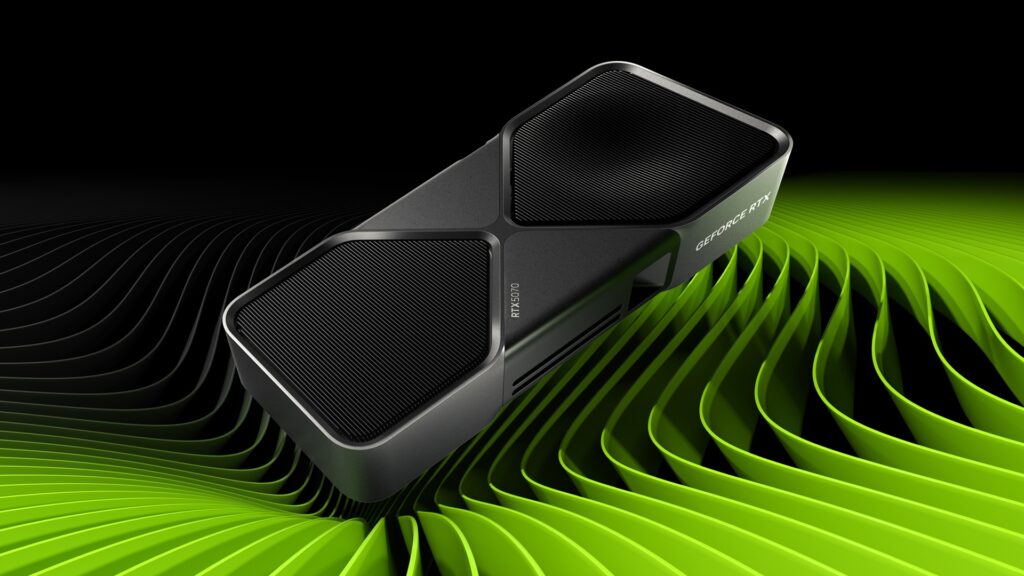The battle for GPU supremacy never takes a break, and as we move further into 2025, AMD and Nvidia are gearing up for another head-to-head showdown in the midrange market. Both companies are preparing to launch their next-generation midrange graphics cards, promising better performance, efficiency, and value for gamers and creators alike.
The Midrange GPU Market: Why It Matters
Midrange GPUs are arguably the most important segment in the graphics card industry. Unlike flagship cards, which cater to enthusiasts willing to pay a premium, midrange GPUs offer the perfect balance of price and performance. These cards target 1080p and 1440p gaming, making them accessible to a wider audience while still providing high frame rates and modern features.
With Nvidia’s RTX 40-series and AMD’s Radeon RX 7000-series already well established in the high-end market, the focus now shifts to the mid-tier offerings that will define the gaming experience for mainstream users in the coming years.
What to Expect from AMD’s Midrange RDNA 4 Cards
AMD’s upcoming midrange GPUs will likely be part of the Radeon RX 8000 series, built on the new RDNA 4 architecture. While AMD has hinted at a continued focus on efficiency and performance-per-dollar, some key expectations include:
- Improved Efficiency: With RDNA 3 already showcasing solid performance-per-watt improvements, RDNA 4 is expected to push this further, possibly using a refined 4nm or even 3nm process node.
- Enhanced Ray Tracing: While AMD has been playing catch-up with Nvidia in ray tracing, RDNA 4 may introduce more dedicated hardware to close the gap.
- AI-Based Features: Following Nvidia’s lead, AMD may incorporate more AI-driven upscaling and frame-generation technology similar to DLSS.
- Competitive Pricing: AMD has historically priced its midrange cards aggressively, and with Nvidia’s competition heating up, we can expect strong price-to-performance ratios.
Nvidia’s Response: The RTX 50-Series Midrange Lineup
On the Nvidia side, the company is preparing to launch its midrange RTX 50-series GPUs, likely powered by the new Blackwell architecture. While details remain scarce, industry leaks and speculation point to several key improvements:
- More Efficient Ada Successors: Nvidia has been improving power efficiency with each generation, and the RTX 50-series midrange models should benefit from a more refined process node and improved architecture.
- AI and DLSS Enhancements: Nvidia will likely double down on AI-driven technologies, improving both ray tracing and upscaling performance to maintain its edge.
- Memory and Bandwidth Upgrades: We might see an upgrade in memory configurations and bandwidth to handle the increasing demands of modern games at 1440p and even entry-level 4K gaming.
- Possible Pricing Adjustments: Nvidia has faced criticism for its pricing strategies, so it will be interesting to see if it adopts a more consumer-friendly approach with the RTX 50 midrange models.
The Impending Showdown: Which Will Offer the Best Value?
As always, the battle between AMD and Nvidia will come down to price, performance, and features. AMD’s Radeon RX 8000-series is expected to challenge Nvidia’s dominance in AI-powered upscaling while offering competitive rasterization performance at a lower price point. Meanwhile, Nvidia’s RTX 50-series midrange cards will likely continue to dominate in ray tracing and AI-assisted gaming technologies.
One of the key factors to watch will be pricing strategies. With increasing competition from Intel in the budget and midrange segments, both AMD and Nvidia may be forced to be more aggressive in their pricing, which is ultimately a win for consumers.
Conclusion
With AMD and Nvidia set to launch their midrange GPU offerings in 2025, the graphics card landscape is about to get even more exciting. Whether you’re a gamer looking for the best 1440p experience or a content creator needing a reliable GPU, the upcoming midrange battle will provide plenty of options. Stay tuned for official announcements and benchmarks, as these new GPUs will likely redefine performance expectations for mainstream users.
What are your expectations for AMD and Nvidia’s midrange GPUs? Let us know in the comments below!


